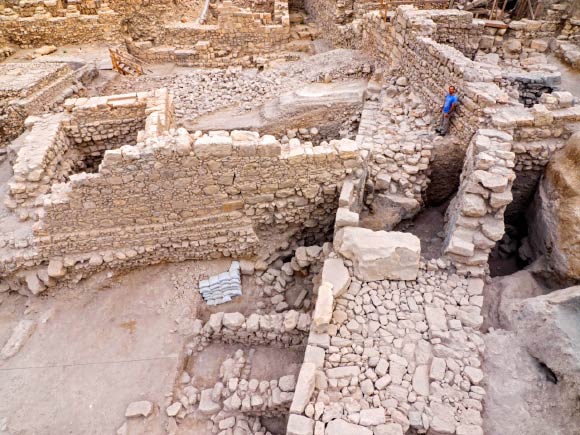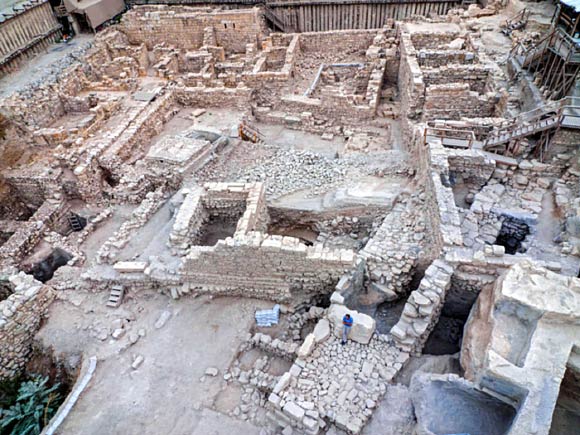
The fortress ruins were unearthed from beneath the Givati parking lot in the City of David, Jerusalem.
According to the IAA archaeologists, Dr Doron Ben-Ami, Yana Tchekhanovets and Salome Cohen, a section of a massive wall, a base of a tower (13 by 66 feet, or 4 by 20 m) and a glacis were uncovered at the site.
"The glacis, which was built next to the wall, is a defensive sloping embankment composed of layers of soil, stone and plaster, designed to keep attackers away from the base of the wall," Dr Ben-Ami explained.

"Numerous coins ranging in date from the reign of Antiochus IV Epiphanes (175-164 BC) to that of Antiochus VII Sidetes (138-129 BC) and the large number of amphorae that were imported from the Aegean region to Jerusalem, which were discovered at the site, provide evidence of the citadel's chronology, as well as the non-Jewish identity of its inhabitants," the archaeologists said.
Historical sources state the fortress of Acra was occupied by mercenaries and Hellenized Jews. The fortress' mighty defenses withstood all attempts at conquering it, and it was only in 141 BC, after a prolonged siege and the starvation of the Greek garrison within the Acra, that Simon Maccabee was able to force its surrender.
"Lead sling shots, bronze arrowheads and ballista stones that were discovered at the site and stamped with a trident, which symbolized the reign of Antiochus IV Epiphanes, are the silent remains of battles that were waged there at the time of the Hasmoneans, in their attempt to conquer the citadel which was viewed as a thorn in the flesh of the city," Dr Ben-Ami and his colleagues said.
Both the Book of Maccabees, as well as the historian Josephus Flavius, locate the fortress of Acra within the City of David:
"And they built the city of David with a great and strong wall, and with strong towers, and made it a fortress [Greek: Acra] for them: And they placed there a sinful nation, wicked men, and they fortified themselves therein." (1 Maccabees 1:35 - 38)"This sensational discovery allows us for the first time to reconstruct the layout of the settlement in the city, on the eve of the Maccabean Revolt in 167 BC," the archaeologists said.
"...and when he had overthrown the city walls, he built a citadel [Greek: Acra] in the lower part of the city, for the place was high, and overlooked the temple; on which account he fortified it with high walls and towers, and put into it a garrison of Macedonians." (Flavius Josephus, Antiquities of the Jews 12:252-253).



The Coins were even stamped 'B.C.'! (Joking.)
R.C.